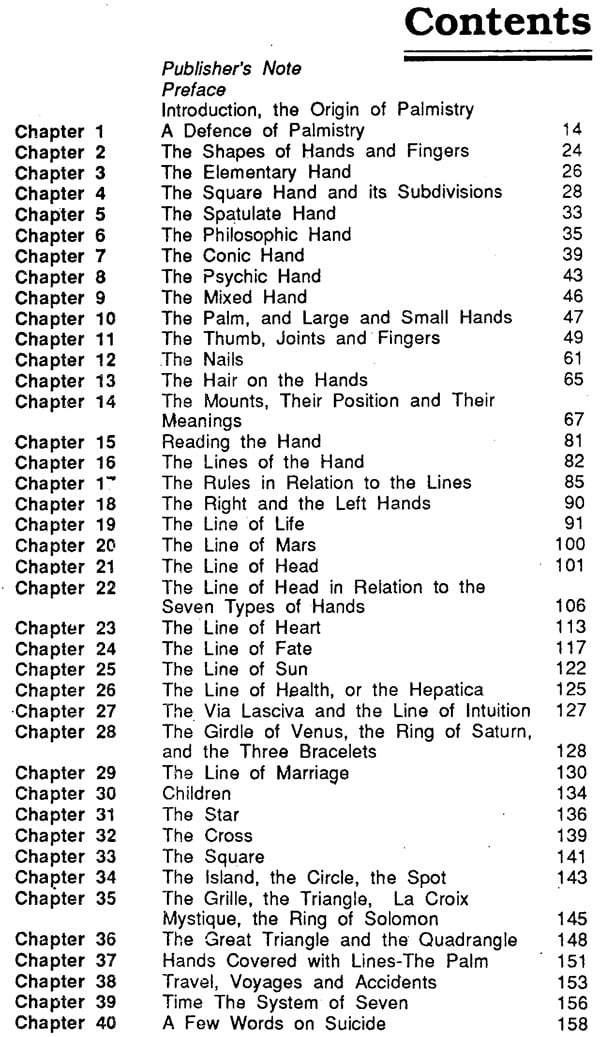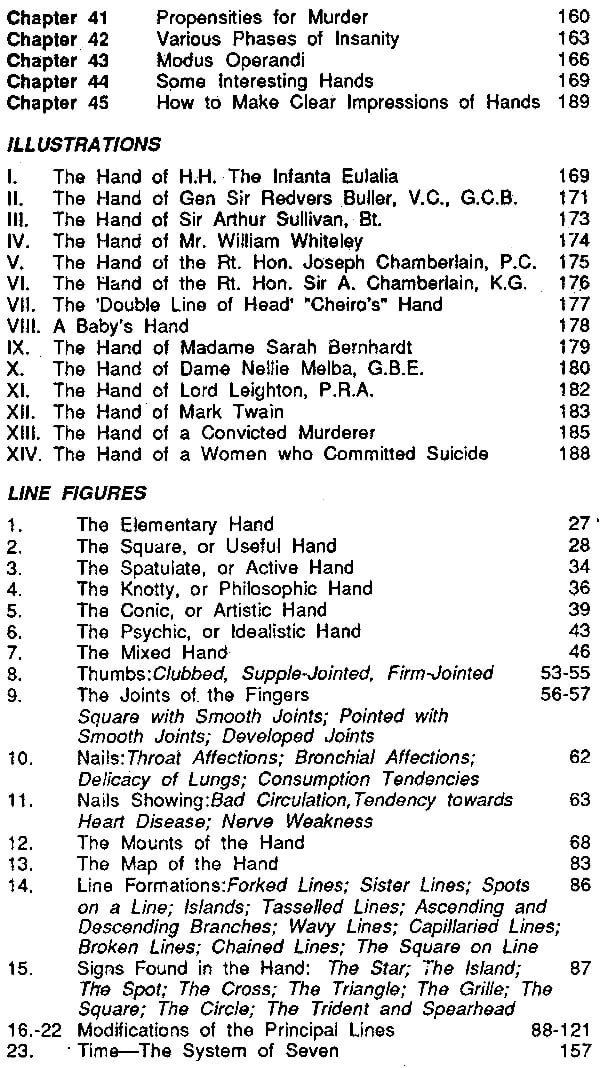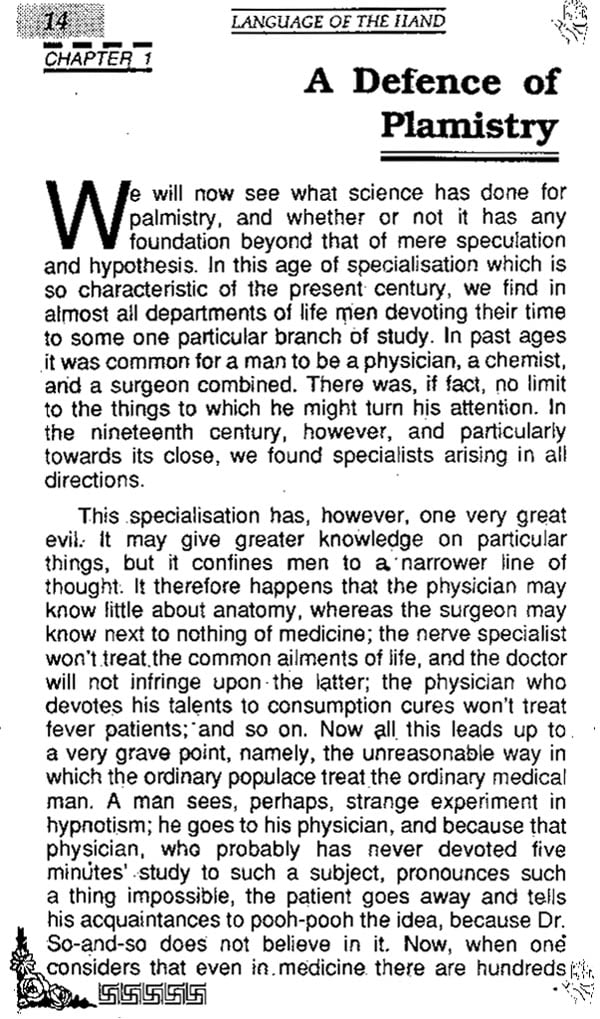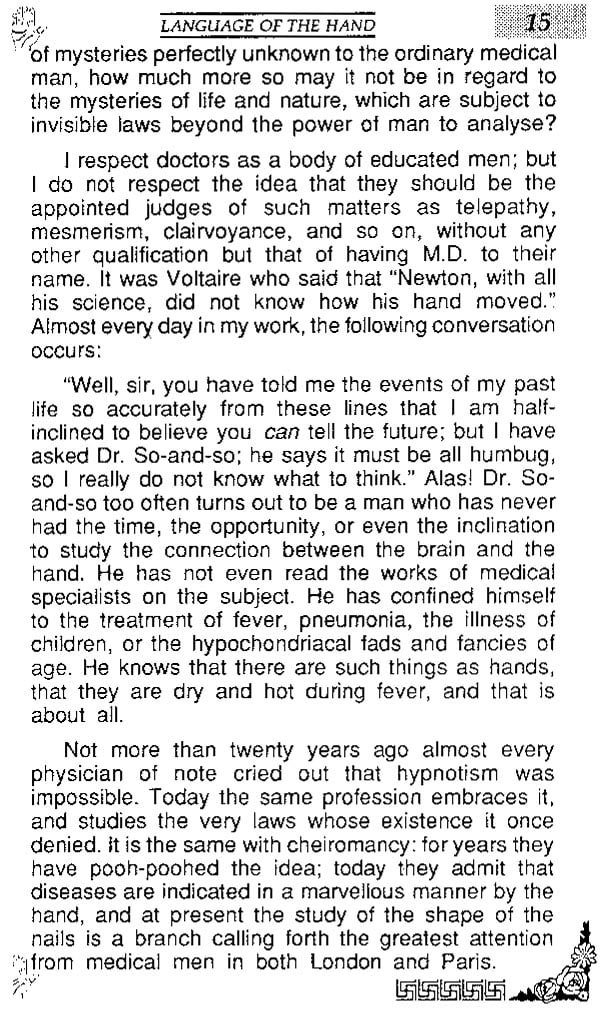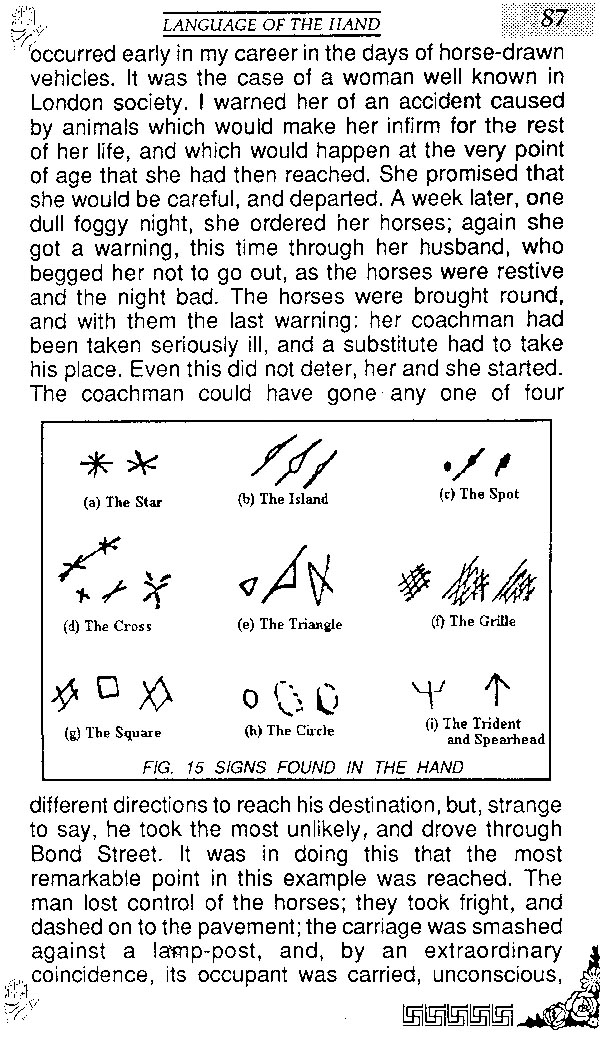
Cheiro's Language of The Hand Illustrated (An Old and Rare Book)
Book Specification
| Item Code: | NAZ873 |
| Author: | Count Louis Hamon |
| Publisher: | Arun Publishing House, Chandigarh |
| Language: | English |
| Edition: | 1996 |
| ISBN: | 8185212422 |
| Pages: | 190 (Throughout B/W Illustrations) |
| Cover: | PAPERBACK |
| Other Details | 8.50 X 5.50 inch |
| Weight | 170 gm |
Book Description
Cheiro's 'Language of the' Hand' is the most authoritative classic of Palmistry in the world. Written by world renowned author, it gives a complete and accurate system involving detailed study of the lines of the hand, besides description of the mounts and nails.
This book includes hand impressions of many celebrities and is richly illustrated throughout. Hands of famous people have been included, with the object of enabling the student to study the hands of those with whose lives and characteristics one is probably acquainted, so that one can see the deference that exists between the hands of the people of different temperaments. Attempt has been made to place illustrations side by side along with the relevant text so that it is readily grasped. One can tell the fortune with the help of Cheiro's amazing knowledge irrespective of the shape of hand or the disposition of its lines. Line drawings of the plates are given side by side so that these plates are easy to view and comprehend. The work is being provided to the readers in bigger typeface along with clear, fine and improved figures so that the book is easy to read and understand. This book would be an asset to the science of hand reading.
It has been proved that the lines in the hand have, like the nose, or the eyes in the face, a normal or natural position. The slightest deviation from the normal denotes abnormal qualities or tendencies, as, for example, the line of head falling to the wrist in the hand of a suicide, and rising and controlling the heart line (the better nature), as in the hand of a murderer. Therefore, if proved in one point that certain marks on the line of head show this or that peculiarity mentally, and that certain indications on the line of life are in relation to length of life or the reverse, the same course of observation, it will be seen, that can predict illness, madness, or death years in advance, will, if persisted in, be also accurate in its findings that marriage will occur at this or that point, with this or that result, and also in regard to prosperity or the reverse. Every other science has been built up by observation; in this study of the hand the observations have been carried on through thousands and thousands of years. During my sojourn in India I was permitted to use and examine a book on the markings of hands, where the most accurate records had been kept of cases wherein lines, marks, and mounts were proven correct.
In placing the following work before the public, though deeply conscious of my responsibility, I am also conscious of the good that may be derived through such a study. I have therefore endeavoured to write, not for any distinct class, but for all, believing in the ultimate universal acceptance of those natural laws which constitute nature and control humankind, and which are peculiarly exemplified by this study of the hand. A trifle is concealed immensity-the atom is equal to the whole in the importance of its existence; if, therefore, this study be considered by some too trivial for their attention, I would remind them that many of the greatest truths the world has known, though once considered trivialities, have become sources of infinite power. I would ask of such people nothing than that they investigate this "atom" for themselves, resting assured that the study will prove its truth, whether examined from the palmistic theory, or from the fact that "progressive specialisation of structure" produces suitability of shape, which by study can be classed under various heads dealing with those characteristics common to occupations, surroundings, and temperaments.
The greatest good in what we most despise,
The greatest light may break from darkest skies.
The greatest chord from e'en the weakest strings.
The Origin of Palmistry
Of all branches of the study of human nature that of the hand has the most powerful claim. By it one can detect, not only the faults in mankind, but the way in which those faults may be redeemed. It is the key to that cabinet of character in which those faults may be redeemed. It is the key to that cabinet of character in which. Nature conceals not only the motive power necessary for everyday life, but those latent talent and energies that by the knowledge of self we can bring to bear upon our lives.
"Know thyself", the motto of the ancients, is the simplest but the grandest sermon that can ring within our ears. By the knowledge of nature do we honour nature; let us then consider the study that can give such knowledge; for by the knowledge of self may we master self, and by the improvement of self may we also improve humankind-to the advancement of the race, to the honour of the world, and to the glory of those who, in the march of time, will fill life's broken ranks, and some day take our place.
In endeavouring to trace the origin of palmistry, we are carried back to the confines of a prehistoric age. History tells us that the remotest period of the Aryan civilisation had a literature of its own. Beyond this we cannot go; but as fragments of this literature are even now extant, we must therefore conclude that it had a still more remote infancy; but into that night of antiquity we dare not venture.
Book's Contents and Sample Pages
